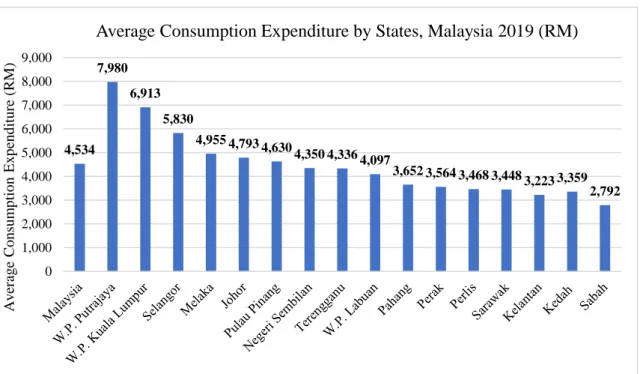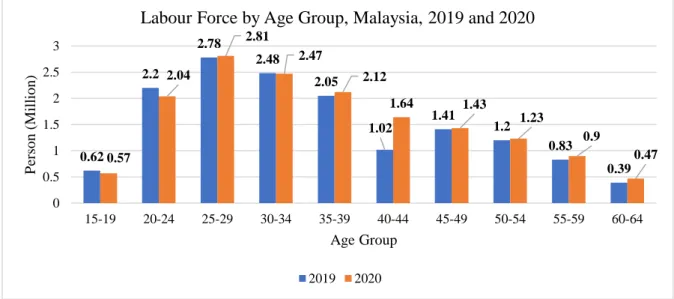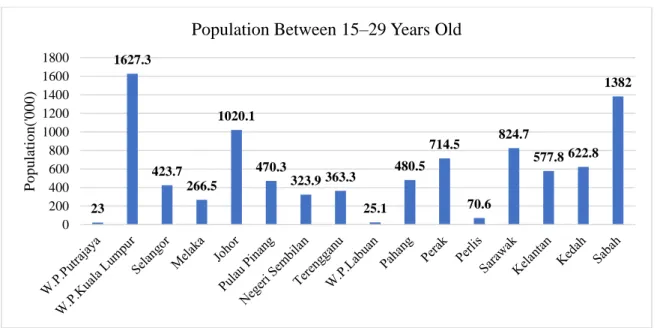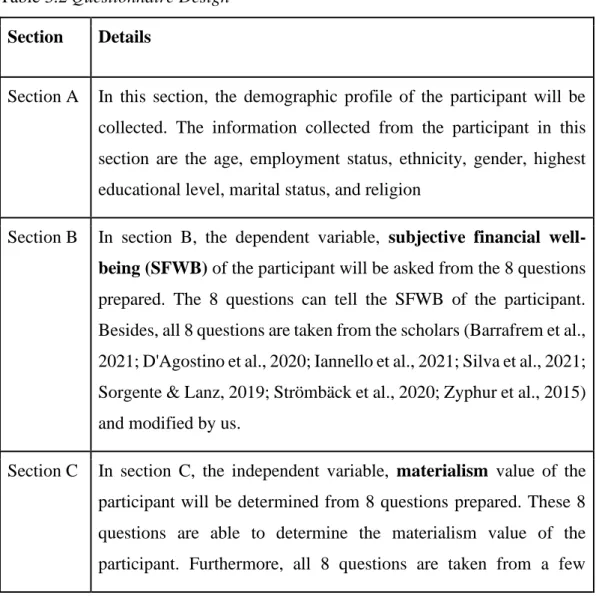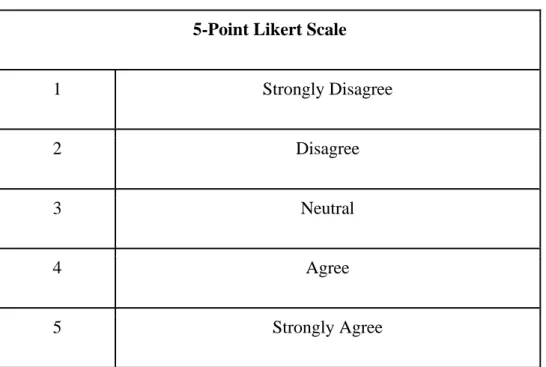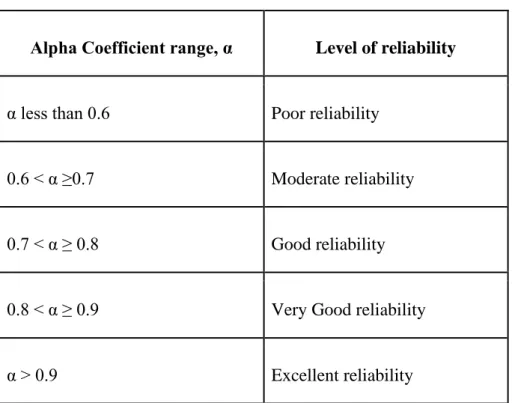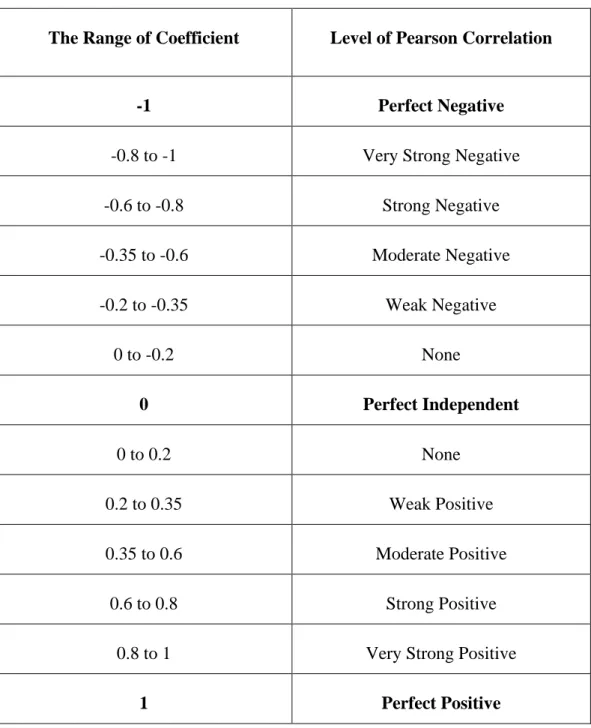Thus, it is important to examine what influences the subjective financial well-being of emerging adults in Malaysia. Subjective financial well-being plays an important role in maintaining the overall well-being of individuals. The aim of this study is to determine the impact of expectations and value on the subjective financial well-being of emerging adults.
INTRODUCTION
- Introduction
- Research Background
- Problem Statement
- Research Question
- Research Objectives
- Significance of Study
- Conclusion
What is the relationship between goal expectancy and subjective financial well-being of emerging adults in Malaysia. This study aims to determine the impact of expectation and value on the subjective financial well-being of emerging adults in Malaysia. To examine the relationship between goal expectancy and subjective financial well-being among emerging adults in Malaysia.
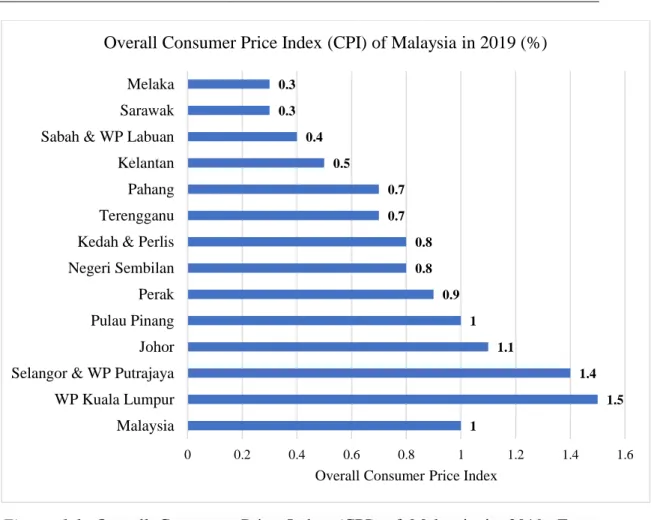
LITERATURE REVIEW
- Introduction
- Relevant Theory
- Expectancy Value Theory (EVT)
- Relevant Studies
- Subjective Financial Well-Being (SFWB)
- Materialism
- Financial Anxiety
- Goal Expectation
- Income Security
- Study’s Conceptual Framework
- Hypothesis
- Gap of Literature Review
- Conclusion
In addition, it appears that the perception of the individual exerts more influence on one's subjective well-being (Oskrochi et al., 2018). Income security is used by few as a measure other than income in determining the individual's financial well-being. This will increase the perceived financial well-being of the individual. Thus, it is assumed that income security has a positive influence on the SFWB (Chatterjee et al., 2019; Liu,2020;).

METHODOLOGY
- Introduction
- Research Design
- Data Collection Method
- Design of Sampling
- Target Population
- Frame and Location Sampling
- Techniques of Sampling
- Size of Sampling
- Research Instrument
- Questionnaire Design
- Variable Measurement
- Pilot Study
- Data Analysis Techniques
- Descriptive Analysis
- Inferential Analysis
- Conclusion
Furthermore, Sekaran (2003) also stated that the sample size of a study should be more than 500 regardless of the size of the population. Section B In section B, the participant's dependent variable, subjective financial well-being (SFWB), will be asked based on the 8 prepared questions. In section C, the independent variable, materialism value for the participant, will be determined based on 8 prepared questions.
Section E In section E, the independent variable, target expectation for the participant, will be asked through the 8 questions from the questionnaire. Section F In section F, the independent variable, income security for the participant, can be accessed from 8 prepared questions. It is therefore important to conduct pilot study to minimize the bias of the study.
Moreover, it helped to discover the internal validity of the research (Hazzin & Maldaon, 2015; Van Teijlingen & Hundley, 2010). Descriptive analysis provides the overall summary of the collected data and measures (Kaliyadan & Kulkarni, 2019). Inferential analysis reveals the relationship and significance of the independent variables to the dependent variable based on the data received.
The function of the test is to ensure that the scale and items are consistent.
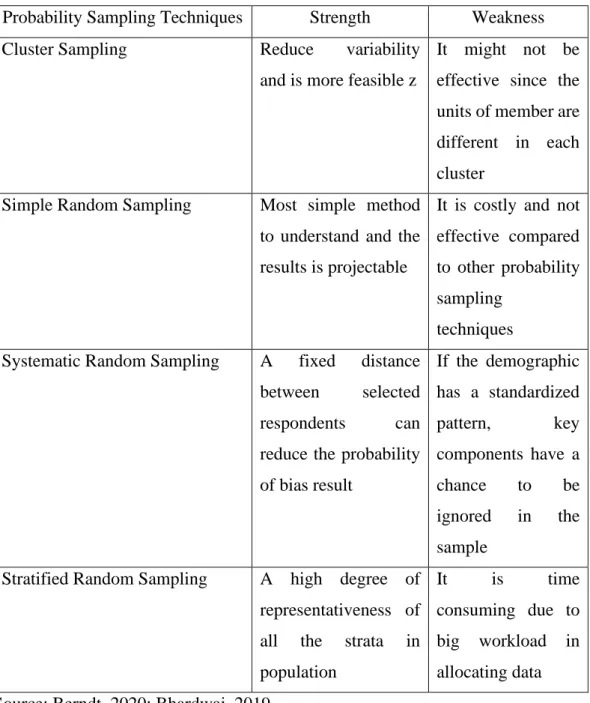
DATA ANALYSIS
- Introduction
- Descriptive Analysis
- Participant’s Demographic Profile
- Central Tendencies Measurement of Constructs
- Scale Measurement
- Pilot Study
- Reliability Analysis
- Inferential Analysis
- Pearson Correlation Analysis
- Multiple Regression Analysis
- Conclusion
For each statement of SFWB, Table 4.1 displays mean, ranking of the mean as well as the standard deviation. While statement 3 "I am confident of having enough money to support myself when I retire." is the lowest mean value compared to others which is 3.24. The result shows on table 4.3, statement 1 "I am worried about my financial and money matters." is the highest average value compared to others which is 3.48.
Based on the result from table 4.4, statement 5 "I believed that achieving the financial goals will increase my standard of living." is the highest mean value. Statement 1 "I am confident that my income will not decrease in the coming year." and Statement 5 "The monthly income I have earned is enough to cover my monthly expenses." is the highest mean compared to others which is 3.91 from Table 4.5. While statement 3 "The income I have earned is able to cover my expenses for 3 months even if I lose my job." is the lowest mean value in the result, which is 2.84.
Table 4.13 shows that with other variables and factors unchanged, the regression coefficient of materialism is 0.067, which indicates that when materialism changes, there will be a change of 0.067 in SFWB.
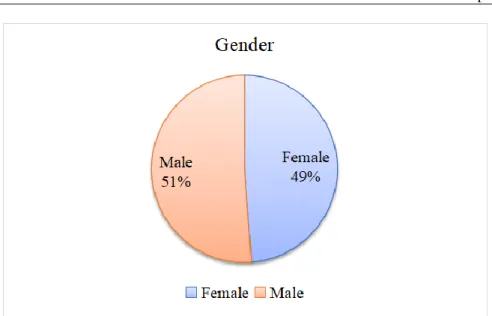
DISCUSSION AND CONCLUSION
Introduction
Summary of Statistical Analysis
- Demographic
These age groups are considered the older group of emerging adults and most of them started working instead of studying. In addition, most of the individuals participating in this study have a bachelor's degree or higher. It revealed that most new adults living or working in the Klang Valley have at least a tertiary education.
This made holders of higher education to be found high in the Klang Valley. In addition, the standard of living in the Klang Valley, people living in this area can have a high level of education. For example, about 71.4 percent of the respondents have a diploma or higher for their educational level according to table 5.1.
According to Table 5.1, approximately 28.10% of the participants in this survey appear to be students. The students are allowed to participate in this research, even if they do not enter the labor market. Some of the students will also look for a part-time job despite their studies.
This is also a form of income and thus they are allowed to participate in this study.
Discussion of Major Findings
- Materialism
- Financial Anxiety
- Goal Expectation
- Income Security
Based on the data analysis, materialism is positively correlated with SFWB with a Pearson's correlation coefficient of 0.322. For example, if other independent variables are constant, the increase of 1 materialism value can lead to an increase of 0.067 on SFWB. The financial anxiety is statistically significant for SFWB at a significance level of 0.01 from the study.
Based on the analysis, financial anxiety is negatively correlated with the SFWB, with a Pearson correlation coefficient of -0.491. For example, holding other variables constant, a 1-scale increase in financial anxiety can lead to a 0.133 decrease on the SFWB. Goal expectation is found to be statistically significant for the SFWB at the study significance level of 0.01.
The data analysis shows that the target expectation is positively correlated with the SFWB with a Pearson correlation coefficient of 0.678. For example, the increase in target expectation by 1 can lead to an increase of 0.404 SFWB of the emerging adult in Klang Valley, Malaysia. Income security is statistically significant for the SFWB at the significance level of 0.01, according to the study.
This indicates that increasing 1 value of income security can increase the SFWB of 0.428 among the emerging adults in Klang Valley, Malaysia.
Implication of Study
According to Manhednru (2020), low financial well-being resulted in a negative impact on mental and physical health. Using expectancy value theory to understand the financial behavior and financial well-being of emerging adults. Using Expectancy Value Theory to Understand Young Adults' Financial Behavior and Financial Well-Being (Dissertation, .
The relationship of materialism to debt and financial well-being: The case of perceived prosperity of Iceland. Assessing the short-term stability of financial well-being in low- and moderate-income households. Income, personality, and subjective financial well-being: the role of gender in their genetic and environmental relationships.
You are invited to participate in a research study titled "Subjective Financial Well-Being of Developing Adults in Malaysia: The Role of Expectations and Value." We are currently conducting a survey to study the role of subjective task expectancy and value in subjective financial well-being among Malaysian adults. Section B: Expectations and Values on Subjective Financial Well-being Please tick (✓) ONE appropriate number in the box to the right to reflect your opinion on subjective financial well-being (SFWB), Materialism (MA), Financial Anxiety (FA), Expectancy of purpose (GE) and income security (IS) on a 5-point Likert scale from (1) Strongly Disagree, (2) Disagree, (3) Neutral, (4) Agree, (5) Strongly Agree.
2 I have set specific financial goals (for example, how much I need to save at the end of the month) to achieve better financial well-being.
Limitation of Study
Recommendation for Future Research
There are some recommendations for the studies that will be conducted by future researchers to address the limitations mentioned above. First, future researchers are proposed to expand the site coverage of their findings to other areas. Because the salary paid and the cost of living are different in each area, expanding location coverage can help discover the difference to the SFWB of emerging adults in other areas as well.
In addition, future researchers are encouraged to compare the SFWB of developing adults in urban areas and rural areas in Malaysia. By doing so, it will contribute to a better interpretation of the SFWB of Malaysian adults. In addition, future researchers should have more study on income types in SFWB.
For example, this study determined the impact of income security on the SFWB, where income applies to all types of income, regardless of income level, passive or active income. Thus, future research should pay more attention to the active and passive source of income. For example, the degree of income security may decrease as a result of future increases in minimum wages by the government.
Therefore, future researchers are able to better analyze the relationship of these independent variables with SFWB of developing adults through longitudinal studies.
Conclusion
However, the findings are inconsistent with past studies that have shown that materialism negatively affects financial well-being. University of Minnesota. Income security, social comparisons, and materialism: Determinants of subjective financial well-being among Indian adults", International Journal of Bank Marketing, Vol. Financial well-being and its relationship with subjective and psychological well-being among emerging adults: testing the moderating effect of individual differences.
Unstable work, unstable income: Implications for family well-being in the age of time-limited prosperity. Subjective self-monitoring, but not objective measures of executive function, predicts financial behavior and well-being. Effects of progressive muscle relaxation on anxiety and subjective well-being in people with schizophrenia: a randomized controlled trial.
Sample Size for Population Size
Pearson Correlation
Research Questionnaire
By submitting this form, you are authorizing and agreeing that we process your personal data and any updates to your information (including disclosure) for the purposes and/or for other purposes related to the purpose. If you do not consent or subsequently withdraw your consent to the processing and disclosure of your personal data, UTAR will not be able to fulfill our obligations or contact or assist you in relation to the purposes and/or for other purposes related to to the target. You can access and update your personal information by writing to Tan Wei Jian at weij473@1utar.my.
3 The income I have earned can cover my expenses for 3 months even if I lose my job. 6 I am confident that the income I have earned is enough to take care of my family for 3 months. 8 I thought I could soon get a similar income from elsewhere if I lose my current income.
Demographic Profile
Central Tendencies Measurement and Reliability Test
Pearson Correlation Coefficient Analysis
Multiple Regression Analysis
